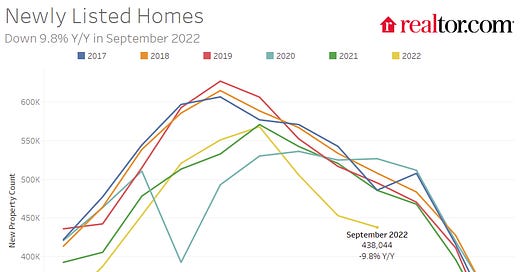Over the last month …
New listings have declined further year-over-year.
Mortgage rates have increased further pushing monthly payments up sharply.
House prices have started to decline month-over-month (MoM) as measured by the repeat sales indexes.
New Listing Have Declined Significantly
Here is a graph of new listing from Realtor.com’s September Housing Tre…
Keep reading with a 7-day free trial
Subscribe to CalculatedRisk Newsletter to keep reading this post and get 7 days of free access to the full post archives.



